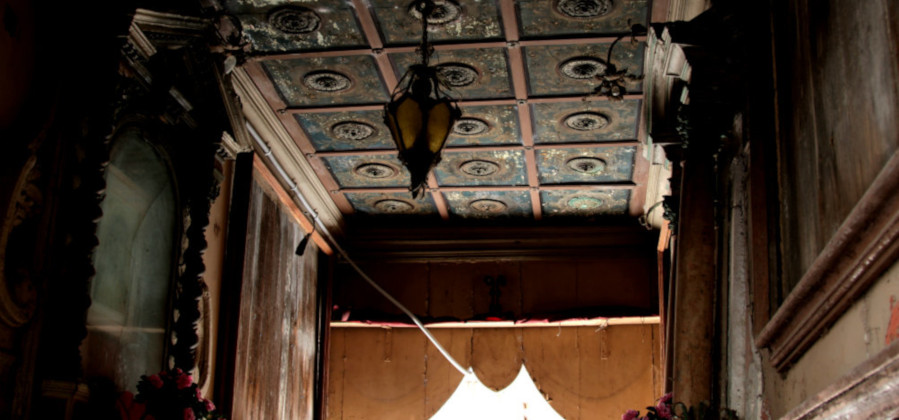Where does the word “quarantine” come from?
Quarantine comes from “quarantena” that means “forty days”, in Venetian dialect, because for forty days people, animals and goods that arrived in Venice by sea were subjected to an isolation period.
You can try to imagine the enormous amount of goods and people that circulated in what was for centuries the largest port city in the world. It is not surprising that Venice had to measure itself cyclically with the outbreak of major epidemics and that, precisely for this reason, it was the first city in the world to issue provisions to prevent the spread of diseases.
Thanks to the experience gained over the centuries, the Serenissima Republic refined all the practices to be followed to stem the infections. One of these was the setting up of lazarettes in some islands of the lagoon. From 1423, people already infected were brought to the island of Santa Maria di Nazareth, near the Lido of Venice. From the distortion of the word Nazareth the island was soon called Lazzaretto. This was the first lazarette in the world and a second one was built in 1468. This was called Lazzaretto Novo to distinguish it from the other one, the “Old”. While Lazzaretto Vecchio hosted already infected people, Lazzaretto Novo had to prevent infections. The island was used to store merchandise and to put ships under quarantine. This precautionary measure nowadays seems obvious, but it was revolutionary at that time.
The travellers were housed, in small houses that were located along the walls, while the goods were stored inside large open sheds called “tesoni”. All documents were fumigated and, on the island, which can be visited today, you can still admire documents of the time where the signs of the pliers that held the sheets were imprinted.
It is worth dedicating a visit to this island in the Venetian lagoon where guided tours are organized with historical-archaeological routes and nature walks. https://www.lazzarettonuovo.com/home-2/
But when science did not provide the solution, faith came to help.
We don’t want to linger too much on the description of the famous religious monuments erected as ex-votos, such as the Basilica della Salute and the Church of Redentore. These churches are well-known throughout the world and they are celebrated every year through very crowded festivals such as the Festa delle Salute and the Festa del Redentore.
Actually, in Venice you can find many other ex-votos related to the plague. One of the most significant can be found in Castello, in the Sotoportego della Corte Nova: according to the inscription at the entrance of the underpass, thanks to the Virgin Mary, no local resident was killed by the plague.
On the ground, in the centre of the portico, between the “masegni” of trachyte, there is a red stone which recalls, according to popular belief, the point where the plague fell weakened. Even today, there is someone who carefully avoids stepping on this stone because it seems to bring bad luck. Unreasonable popular superstitions, you will say, that however, the writer is careful not to step on it, because, as the great Edoardo de Filippo said, ” Being superstitious is a sign of ignorance, but not being superstitious brings bad luck.”


 HOTEL CARLTON CAPRI
HOTEL CARLTON CAPRI LA CUPOLA RESTAURANT
LA CUPOLA RESTAURANT TOP OF THE CARLTON SKY LOUNGE
TOP OF THE CARLTON SKY LOUNGE HOTEL CARLTON ON THE GRAND CANAL
HOTEL CARLTON ON THE GRAND CANAL





















